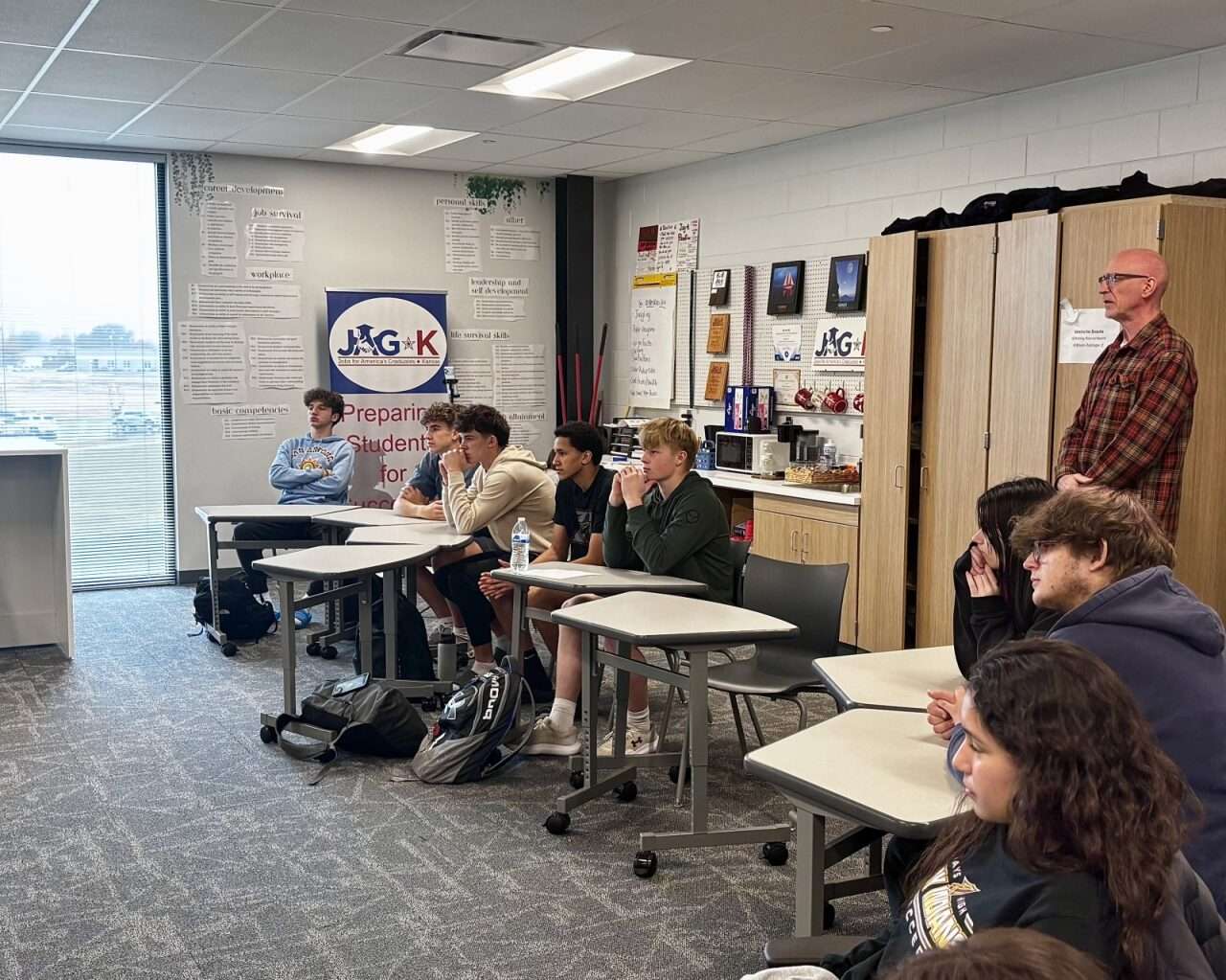Building Culture: Big Projects Will Improve Educational Experience – LPSS

Lafayette Parish School System Infrastructure Development Report: Alignment with Sustainable Development Goals
Introduction
The Lafayette Parish School System (LPSS) has initiated a series of strategic infrastructure projects aimed at enhancing the educational environment and aligning with key United Nations Sustainable Development Goals (SDGs). Through fiscal planning and leadership, the district is undertaking the construction of permanent academic facilities, athletic complexes, and a new K-8 school. This report details these initiatives and their direct contributions to achieving global sustainability targets, particularly in education, equality, and infrastructure.
Project Overview and Contribution to SDG 9: Industry, Innovation, and Infrastructure
The core of the district’s initiative is the modernization of its physical infrastructure, a direct reflection of SDG 9, which calls for building resilient infrastructure and upgrading facilities to make them sustainable. The projects represent a shift from temporary, inadequate structures to permanent, modern, and purpose-built solutions.
Key Infrastructure Initiatives
- Replacement of Portable Classrooms: Phasing out temporary portable buildings, some over 30 years old, with permanent brick-and-mortar wing additions at multiple campuses.
- Development of Athletic Facilities: Constructing new and upgraded athletic spaces at Milton, David Thibodaux STEM Magnet Academy, Southside High School, and Lafayette High School.
- Construction of a New K-8 School: Building a new, modern campus in north Lafayette to replace outdated facilities.
Alignment with SDG 4: Quality Education
All projects are fundamentally designed to advance SDG 4 by ensuring inclusive and equitable quality education and promoting lifelong learning opportunities for all. The creation of stable, safe, and modern learning environments is critical to this mission.
Enhancing the Quality of Learning Environments
- Permanent Classrooms: The transition from deteriorating portable units to permanent, fully equipped classrooms provides a stable, safe, and academically supportive environment essential for quality instruction and student success.
- Improved School Culture: By consolidating students and teachers into permanent wings, the projects foster a stronger sense of community and culture within grade levels and subject areas, which is integral to a positive and effective learning environment.
Addressing SDG 10: Reduced Inequalities
A significant component of the district’s plan directly targets SDG 10, which aims to reduce inequality within and among countries. The construction of a new K-8 school is a transformative investment in equitable access to quality facilities.
Promoting Educational Equity
- New K-8 School for North Lafayette: This project explicitly addresses historical inequities by replacing decaying facilities in a historically underserved community. It provides children with access to a modern, thoughtfully designed learning environment, representing a new beginning for families who have awaited equitable facilities for generations.
Supporting SDG 3 (Good Health and Well-being) and SDG 11 (Sustainable Cities and Communities)
The infrastructure upgrades also contribute to the broader well-being of students and the sustainability of the local community.
Fostering Well-being and Community
- Athletic Facilities (SDG 3): Investment in new and upgraded athletic facilities enhances physical education programs and promotes student health, well-being, and school spirit.
- Community Hubs (SDG 11): These facilities are designed to serve as community hubs, strengthening social cohesion and providing safe spaces for students to grow and compete.
- Safe and Resilient Buildings (SDG 3 & 11): Replacing aging portables with permanent structures improves the safety and security of the school environment, contributing to the physical and mental well-being of students and staff and building more resilient community infrastructure.
Conclusion: A Commitment to a Sustainable Future
The construction projects undertaken by the Lafayette Parish School System are more than infrastructure upgrades; they are a strategic implementation of principles outlined in the Sustainable Development Goals. By investing in permanent, equitable, and modern facilities, LPSS is building a foundation for quality education (SDG 4), reducing inequality (SDG 10), developing resilient infrastructure (SDG 9), and promoting community well-being (SDG 3 & 11), thereby ensuring a sustainable and promising future for its students.
Analysis of Sustainable Development Goals (SDGs) in the Article
1. Which SDGs are addressed or connected to the issues highlighted in the article?
-
SDG 4: Quality Education
- The entire article focuses on improving the physical infrastructure for education. It discusses replacing temporary classrooms with permanent ones, building new school wings, and constructing a new K-8 school to “enhance the learning environment.” This directly aligns with the goal of ensuring inclusive and equitable quality education.
-
SDG 10: Reduced Inequalities
- The article explicitly mentions equity by highlighting the construction of a new K-8 school in north Lafayette. It states, “For families who have waited generations for equitable facilities, this project marks a new beginning.” This shows a direct effort to address historical inequalities in access to quality school infrastructure for a specific community.
-
SDG 11: Sustainable Cities and Communities
- The projects described contribute to creating inclusive, safe, and sustainable community infrastructure. The replacement of “deteriorating portable units” and “outdated, decaying facilities” with modern, permanent structures improves the safety and quality of public service buildings. Furthermore, the investment in athletic facilities as “community hubs” enhances public spaces for students and the wider community.
2. What specific targets under those SDGs can be identified based on the article’s content?
-
Target 4.a: Build and upgrade education facilities that are child, disability and gender sensitive and provide safe, non-violent, inclusive and effective learning environments for all.
- The article details the district’s plan to replace “aging portables” with “permanent, purpose-built classrooms” and to build a “brand-new K-8 school” to replace “outdated, decaying facilities.” These actions are a direct implementation of upgrading educational facilities to create “safer, more comfortable, and more academically supportive” learning environments.
-
Target 10.2: By 2030, empower and promote the social, economic and political inclusion of all…
- The construction of a new school in north Lafayette is presented as a transformative project to provide “equitable facilities” to a community that has historically lacked them. This investment represents a tangible action to promote inclusion and provide equal opportunities for children in that area, directly supporting the aim of this target.
-
Target 11.7: By 2030, provide universal access to safe, inclusive and accessible, green and public spaces…
- The article mentions investments in “new and upgraded athletic spaces” at several schools. It notes that “These facilities serve as community hubs, giving students a place to grow, compete, and represent their schools with pride.” This aligns with the goal of providing access to public spaces for recreation and community building.
3. Are there any indicators mentioned or implied in the article that can be used to measure progress towards the identified targets?
-
Indicators for Target 4.a
- The article implies several measurable indicators for progress. These include:
- The number of portable buildings eliminated.
- The number of new, permanent classrooms constructed through “wing additions.”
- The completion of the new K-8 school, replacing old facilities.
- The article implies several measurable indicators for progress. These include:
-
Indicators for Target 10.2
- Progress toward this target is indicated by the specific, targeted investment in a historically underserved area. A key indicator is:
- The construction and opening of the new K-8 school in north Lafayette, which serves as a direct measure of the effort to provide equitable facilities.
- Progress toward this target is indicated by the specific, targeted investment in a historically underserved area. A key indicator is:
-
Indicators for Target 11.7
- The article points to concrete outputs that can be used as indicators. These include:
- The number of new or upgraded athletic facilities completed at Milton, David Thibodaux STEM Magnet Academy, Southside High School, and Lafayette High School.
- The article points to concrete outputs that can be used as indicators. These include:
4. Summary Table of SDGs, Targets, and Indicators
| SDGs, Targets and Indicators | Targets | Indicators |
|---|---|---|
| SDG 4: Quality Education | Target 4.a: Build and upgrade education facilities to create safe, inclusive, and effective learning environments. |
|
| SDG 10: Reduced Inequalities | Target 10.2: Empower and promote the social inclusion of all. |
|
| SDG 11: Sustainable Cities and Communities | Target 11.7: Provide universal access to safe, inclusive, and accessible public spaces. |
|
Source: lpssonline.com
What is Your Reaction?
 Like
0
Like
0
 Dislike
0
Dislike
0
 Love
0
Love
0
 Funny
0
Funny
0
 Angry
0
Angry
0
 Sad
0
Sad
0
 Wow
0
Wow
0
















































:focal(1500,1000)/https://media.globalcitizen.org/a6/9a/a69a4720-d8a1-4715-b596-18738d03c05c/rotary_polio_hero_image.jpg?#)







/countries/sri-lanka/photo-credit---dmc-sri-lanka.tmb-1200v.jpg?sfvrsn=dc298bcc_1#)


















